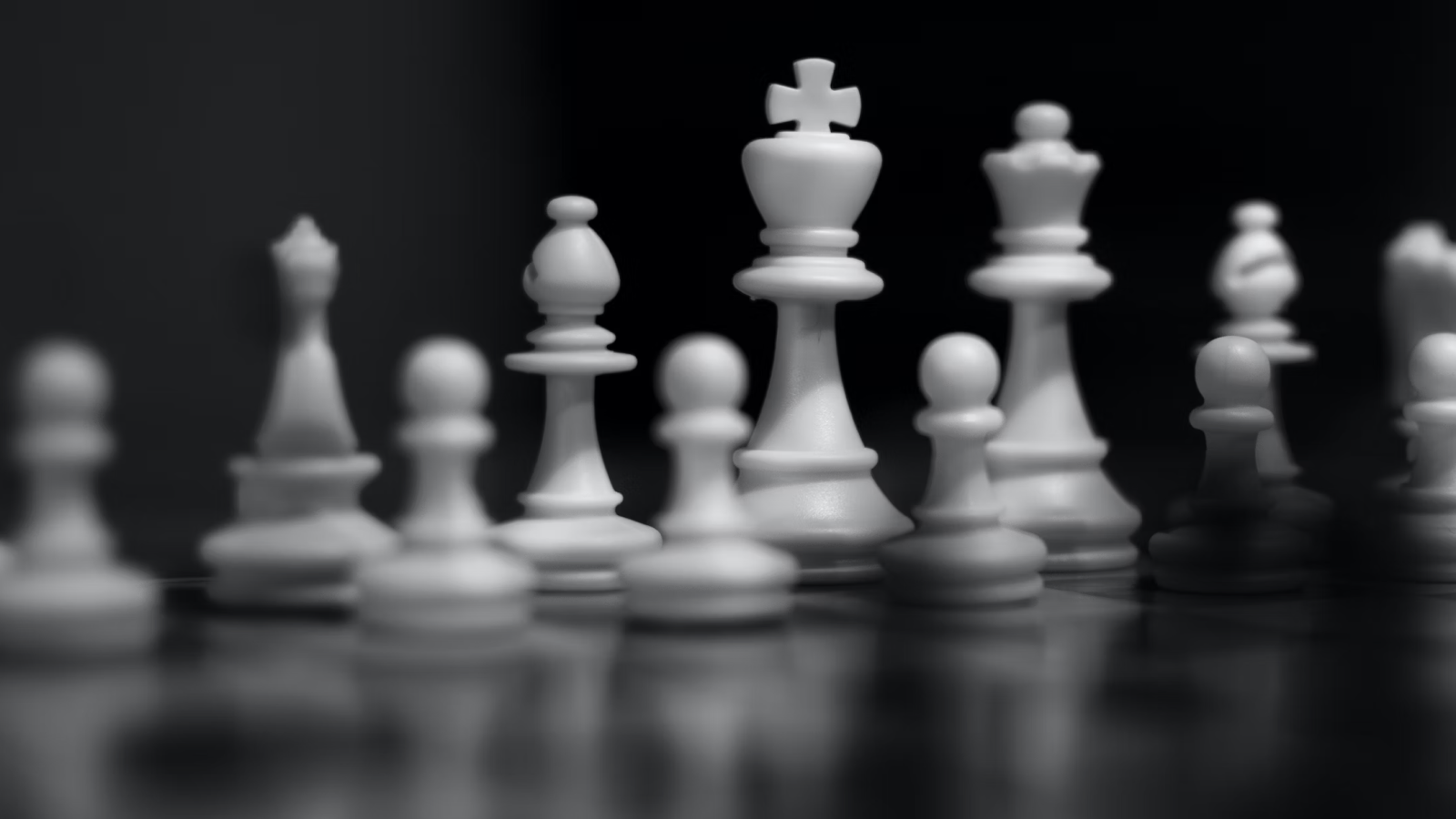I learned chess when I was young, and it remains my favorite game to play. With a chess rating of 590, I have a ways to go before reaching any sort of mastery level. But still the game intrigues me, and I’m usually playing 10 games at a time with people from across the globe on the chess.com app. With each player given a few days to make their next move, it’s easy to keep up in my nightly routine. It could be a slight addiction—likely; but delving into a game that stretches my strategic thinking is a joy for me.
Chess has long been regarded as a test of strategic thinking, foresight, and adaptability. Surprisingly, the principles that govern success on the chessboard bear a striking resemblance to the challenges faced in the world of marketing. In this article, we explore these parallels and gleam important insights.
Set Up Your Pieces
In both chess and marketing, success often hinges on how well you set up your pieces. In chess, this involves positioning your pieces strategically to control the board. In marketing, it translates to aligning your resources, understanding your audience and your brand.
To set yourself up well in chess it’s best to control the center of the board. With 64 squares on the board, owning the four central squares is advantageous. It’s difficult to gain success when your pieces are moving on the outside of the board as outliers. In parallel to marketing, your target audience should be the center of your strategy. Have a strong core and work outward from there.
When you start a chess game, you open with a strategy in mind just as you would start with a clear vision in a marketing plan. Avoid the “spaghetti effect,” where actions are haphazardly thrown, hoping that something will stick. Be smart and understand the different ways to open a strategy.
Understand the Possibilities
The possible positions after a certain number of moves in chess is estimated to be 10^120—that’s a lot. While marketing may not reach this count, there are still endless approaches available. This ranges in broad categories like digital marketing, content marketing, social media marketing, influencer marketing, event marketing, mobile marketing, retention marketing and so many more.
The key lies in analyzing the situation, understanding your goals and resources and then choosing the moves that best suit your strategy. Marketers must be versatile and creative in their approach.
Be Responsive
The chessboard is constantly shifting, and so is the marketing landscape. Trends, algorithms and customer preferences are always evolving. A good marketer, like a skilled chess player, stays agile, adapting their tactics to the ever-changing environment. A well-timed social media post can capitalize on a trending hashtag, or a responsive email campaign can turn a prospect into a customer. Pivoting becomes a necessary skill.
Understand the Long-Term Strategy
I recently played a chess game that latest for weeks. I really thought I was in a position to win, but one twist made this more difficult. Back and forth my opponent and I slowly made our thoughtful moves. In the end it became a stalemate, and neither one of us had enough pieces to win. I was a bit disappointed, but it reminded me of a business lesson by Simon Sinek, of which this thought inspired me to write this article.
In his book, The Infinite Game, Sinek shares the wisdom that “Finite players play to beat the people around them. Infinite players play to be better than themselves.” To put it another way, success in business is not about eliminating competitors but outlasting them.
Obsessing over your direct competition can cause tunnel vision and missed opportunities. It’s like the whack-a-mole game. Let’s say you beat your competitor (of which what does that look like, really?), another competitor will just pop up to whack. While you’re whacking away, innovations by your unknown competitors will be happening beyond your purview.
“Play the infinite game. Business is a game where two players can offer a similar product, at similar price and both be wildly successful at the same time; so, it’s a fool’s errand to try and win.”
Simon Sinek
Going back to the chess game. I didn’t beat my opponent, but I didn’t lose either. I remained focused on lasting in the game; and that’s a win in my book. An aggressive player might have fixated on capturing pieces, but a wise strategist understands the long game.
In marketing, the emphasis on long-term strategy and building a sustainable brand presence aligns with the notion of enduring the challenges rather than focusing solely on short-term victories. Sometimes, securing your own position and ensuring long-term sustainability is a powerful victory in itself.
Conclusion
Chess, like marketing, is a mental game demanding great planning, tactical agility, and the ability to think several moves ahead. So, the next time you see a chessboard, don’t just see a game; see a canvas for crafting compelling campaigns, outsmarting competitors, and outlasting your way to market success.
Remember, every move counts.

